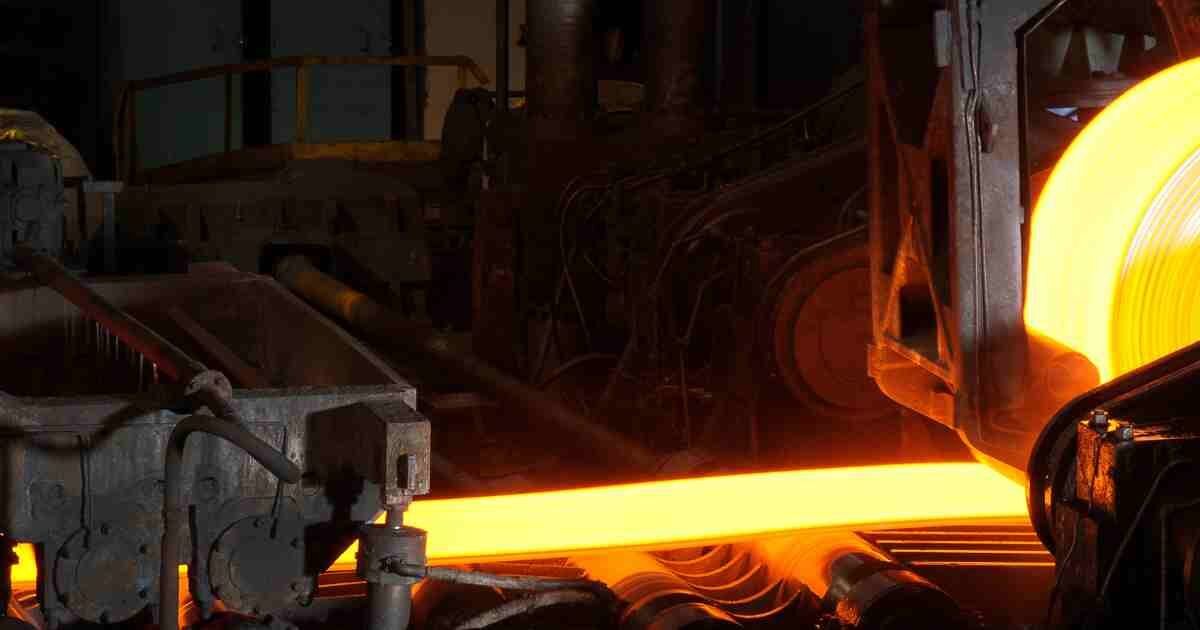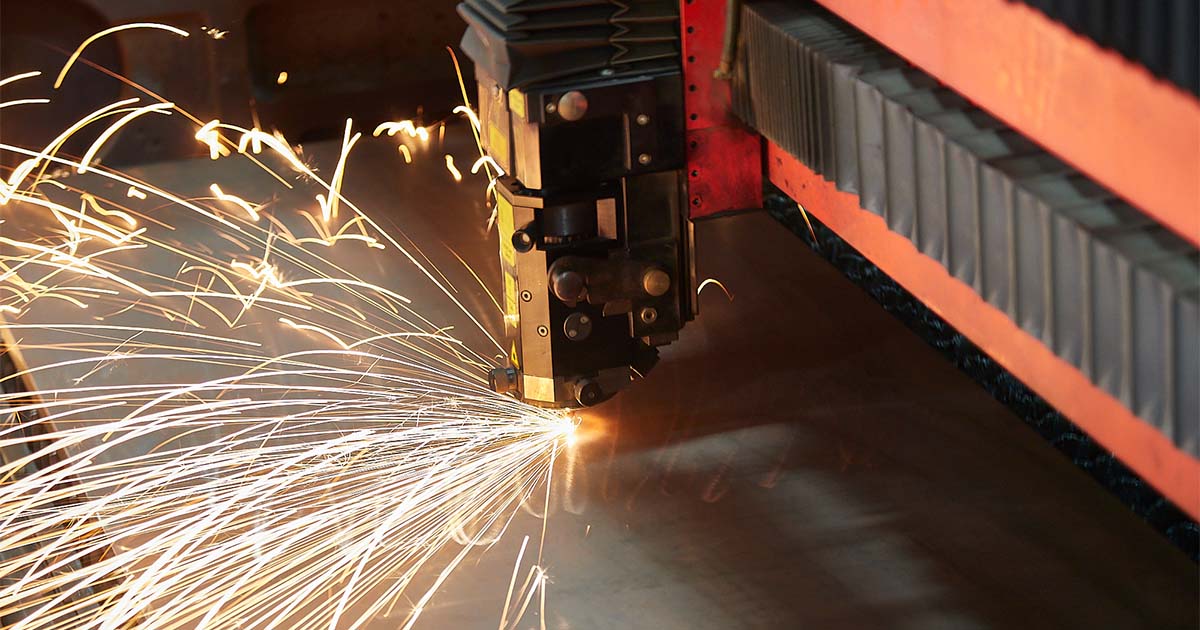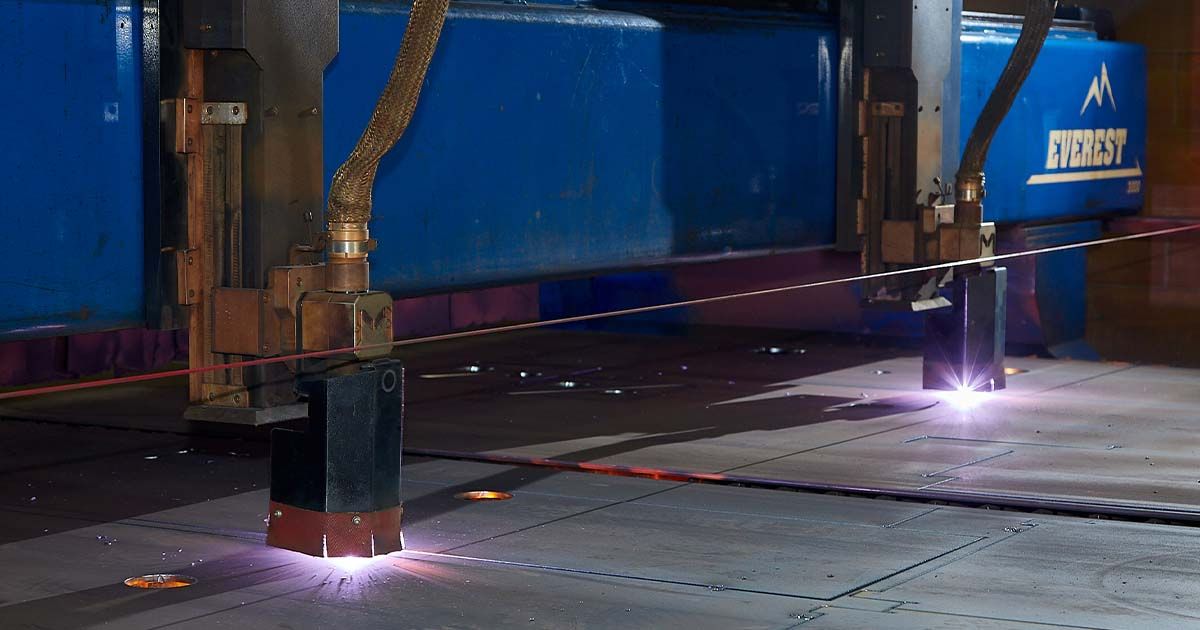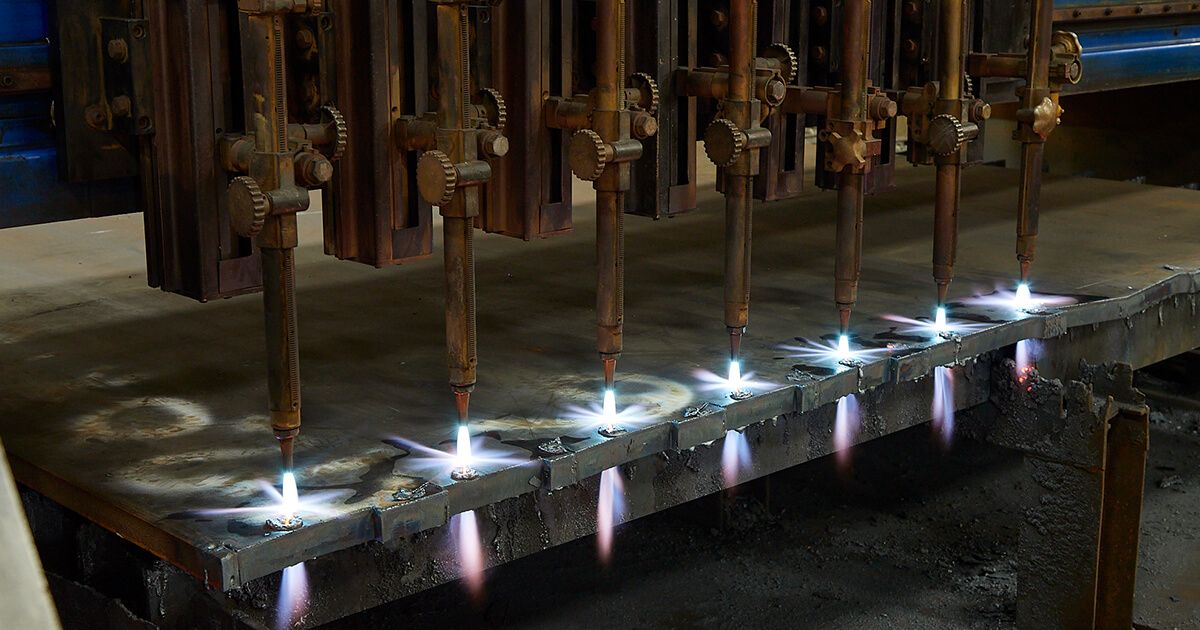
We collect basic website visitor information on this website and store it in cookies. We also utilize Google Analytics to track page view information to assist us in improving our website.
If you’re passionate about metal cutting or just keen to learn more, you’ve landed in the right place.
For over 38 years, Amber Steel has been at the forefront of metal cutting services, specializing in laser cutting, flame cutting, and plasma cutting. Our expertise has carved a niche in this cutting-edge industry, delivering precision and excellence across industrial projects big and small.
In our blog, we’ll share a mix of useful tips, innovative applications, our thoughts on sustainability in steel cutting, and more. Expect stories from the cutting floor, insights into how our processes can streamline projects across industries, and a few lessons we’ve learned along the way.
While we keep some of our trade secrets under wraps, this blog is designed to offer valuable nuggets of wisdom that you simply won't find anywhere else. Whether you’re a professional in the industry or someone fascinated by the possibilities of metal cutting, you'll find something of value here.
So, stick with us as we delve into the finer points of metal work. We’re glad to share our insights and lead discussions that matter to our industry.
How precision metal cutting propels the aerospace industry, from constructing lighter frames to enhancing aerodynamics.
The role of advanced metal cutting in automotive manufacturing, driving innovations in vehicle design and efficiency.
All about the robust and versatile process of flame cutting, ideal for tackling thicker metals with precision and ease.
Discover the art of crafting metal furniture, where cutting techniques meet design to create both functional and aesthetic pieces.
A behind-the-scenes look at the mechanics of metal cutting technologies and the science that makes them tick.
Laser cutting is where extreme precision meets efficiency, allowing for intricate designs and clean finishes.
The critical role of precise steel cutting in developing reliable and intricate medical devices.
How steel cutting supports the oil and gas industry with components that withstand extreme environments and pressures.
Known for its speed and versatility, plasma cutting slices through conductive metals with hot plasma.
Safety first! Tips and insights on maintaining a safe environment while handling powerful metal cutting equipment.
The backbone of construction, where steel fabrication and cutting technologies create frameworks that shape skylines.
Sustainability
A look at sustainability in metal cutting, focusing on practices that reduce waste and conserve energy to protect our planet.

In metal fabrication, heat isn't just a byproduct—it's a powerful tool that transforms how metals perform. Heat treatment gives manufacturers precise control over metal properties through careful heating and cooling. This becomes crucial when cutting metals for everything from aerospace components to construction materials.
The key to successful heat treatment lies in understanding three core methods, each serving a distinct purpose. Annealing softens the material and reduces internal stress, making it more malleable and easier to cut. Hardening boosts strength and resistance to wear, though it can make metals more challenging to work with. Tempering helps find the right balance by reducing brittleness while maintaining strength.
This guide explores how these heat treatments influence metal cutting operations, helping shops achieve better results while managing costs. By mastering these techniques, fabricators can optimize key properties like hardness, flexibility, and strength. Getting these properties right before cutting can significantly improve both the cutting process and final product quality.
For more insights about heat treatment, check out Thermal Processing’s Guide to Industrial Heat Treating.
Annealing involves heating metal to specific temperatures, typically between 1,200°F–1,500°F (649°C–815°C) for steel and 570°F–770°F (300°C–410°C) for aluminum alloys. The metal is then cooled slowly, like letting a cup of hot tea cool naturally. This gentle process reduces internal stresses and softens the material, making it easier to work with.
When metals are annealed, they offer less resistance to cutting tools. This reduces wear and tear on equipment, allowing for faster cutting speeds and extending tool life. Many fabrication shops anneal aluminum and mild steel when intricate cuts or detailed designs are required. For instance, laser-cutting annealed aluminum sheets produces clean, precise edges while extending tool life by up to 30%, compared to cutting untreated materials.
Hardening heats metal to around 1,500°F (815°C) before rapidly cooling it in water or oil, a process called quenching. This rapid cooling transforms the metal into a harder and stronger state, though it also introduces brittleness. Think of it as plunging a hot pan into cold water—effective but potentially stress-inducing for the material.
The harder metal makes cutting more challenging, as it generates increased friction and heat, which can lead to warping. For example, plasma cutting hardened steel plates often requires reducing cutting speeds by approximately 25% to manage heat buildup and minimize tool wear. Quenching mediums like oil offer a gentler cooling process, reducing the risk of cracks compared to water.
After hardening, tempering reheats the metal to a lower temperature, typically between 300°F–1,200°F (149°C–649°C), and then allows it to cool again. This process softens the material slightly, alleviating brittleness while retaining much of its hardness. Think of tempering as softening butter to just the right consistency—it’s all about finding balance.
Tempered metals offer the best of both worlds: strength and machinability. For structural components like construction beams, tempering at around 800°F (427°C) produces a material that is strong, durable, and capable of being accurately cut and fitted.
Heat-treated alloys, such as tool steels and certain stainless steels, are like complex recipes, with different elements responding uniquely to cutting tools. Success in cutting these alloys depends on selecting the right tools. For example, diamond-coated tools last significantly longer—often 5–20 times—than standard carbide tools when cutting hardened steels. Though these tools require a higher initial investment, they ensure cleaner cuts and greater efficiency over time.
Heat treatment plays a big role in deciding which cutting method will work best. Different cutting processes work better or worse depending on how the metal has been heat treated. Here's how each method matches up with different types of heat-treated metals:
Laser cutting works best with annealed and tempered metals, especially when you need detailed cuts. It creates clean, precise edges and works well with softer materials. However, laser cutting runs into trouble with hardened metals because they resist the beam more strongly.

Plasma cutting handles tempered and moderately hardened metals well. It can cut through thick materials effectively while keeping decent precision. While the edges aren't as smooth as laser cuts, plasma cutting offers good speed and versatility. Many shops choose plasma for structural steel work where edge quality isn't as critical.

Flame cutting works particularly well with annealed metals and thick steel plates. It's a cost-effective choice for heavy-duty work, but it has limits. The intense heat can distort hardened metals, creating what fabricators call heat-affected zones (HAZ). These zones might change the metal's properties in ways you don't want.

For more details about choosing the right cutting process, check out our article on Plasma Cutting vs. Flame Cutting.
The success of your heat-treated metal cutting depends on understanding and managing several key factors. Here's what needs attention in your cutting operations:
Different metals need different approaches based on their heat treatment. Softer, annealed metals welcome faster cutting speeds while being gentler on your tools. With hardened metals, you'll need to switch to specialized tools and dial back your cutting speed for the best results.
Cutting through hardened metals puts heavy stress on your tools. Using coated tools or carbide materials helps counter this wear. Many shops find this initial investment pays off through longer tool life and more consistent cutting quality. The Fabricator's guide maximizing punch life offers valuable strategies for extending tool life even further, especially when working with hardened materials.
Flame and plasma cutting create heat-affected zones (HAZ) that can change your metal's properties. Good calibration and post-cutting treatments help minimize unwanted changes. Managing these zones takes careful attention to both equipment settings and cooling methods. Check out this article from The Fabricator for more insights into managing heat-affected zones during cutting.
Proper cooling systems, whether air or liquid-based, prevent heat buildup during cutting. This becomes crucial with hardened metals, where excess heat can cause thermal expansion and throw off precision measurements.
Heat treatment and cutting methods serve different needs across industries:
Aerospace needs demand laser cutting of hardened and tempered components for precision in critical parts like turbine blades.
Construction relies on plasma cutting tempered steel beams for structural strength and proper fit.
Automotive manufacturers prefer laser-cutting annealed aluminum sheets for body panels, balancing weight and appearance.
Heavy equipment fabrication often uses flame cutting on thick, annealed steel plates.
Medical equipment presents unique demands. Manufacturers use laser cutting on heat-treated stainless steel for surgical instruments. This application requires perfect balance between hardness and corrosion resistance, with zero tolerance for cutting-induced flaws that could affect safety.
Advancements in laser and plasma cutting technologies are enabling faster and more precise operations. Innovations like AI-guided cutting and advanced simulation software are being adopted to streamline workflows and reduce errors. As industries demand higher efficiency, staying updated on these trends is critical.
For more on industry developments, explore Metal Cutting Trends in 2025.
Making metal too hard through heat treatment can create cutting problems. Many shops first harden the metal for strength, then use tempering to make it more workable. This two-step approach helps maintain strength while making cutting easier. Getting the hardness level right involves careful monitoring of temperatures and cooling rates. Most fabricators test the metal's hardness at several points to ensure consistent results.
Heat treating your metal before cutting often saves time and money. Annealing the metal first lets you cut faster and keeps your tools sharp longer. This preparation step leads to cleaner cuts and fewer problems during machining. Well-planned pre-cutting treatment can reduce overall production time by up to 30% in many cases. The key is matching your annealing process to both your material type and your planned cutting method.
Some parts, especially precision components, benefit from heat treatment after cutting. Tempering helps relieve the stress that builds up during cutting. This extra step can make parts last longer and perform better in their final use. Post-cutting heat treatment becomes particularly important for parts that will face heavy loads or frequent stress cycles. Many aerospace and automotive components require this additional processing to meet strict performance standards.
Some projects work best when you combine different cutting approaches. A common strategy uses laser cutting for detailed work and plasma cutting for removing larger sections. This gives you both the precision and speed you need.
For example, many fabricators use lasers for exact edge cuts, then switch to plasma cutting for the heavier work. Planning these combination approaches requires careful consideration of how different cutting methods affect the metal's properties. Smart sequencing of operations can significantly reduce both production time and material waste.
Every successful project starts with informed choices. Understanding how heat treatment affects metal properties and choosing the right cutting method ensures efficiency and precision. Whether you need the soft workability of annealed metals, the strength of hardened steel, or the balanced properties of tempered components, aligning heat treatment with cutting processes is the key to success.
At Amber Steel, we find solutions that meet your project’s needs. From material selection to cutting method optimization, our expertise ensures your fabrication process runs smoothly from start to finish. For more expert advice, read our guide on Maximizing Efficiency in Industrial Laser Cutting Operations.
Ready to tackle your next project? Contact Amber Steel for expert advice and cutting solutions.